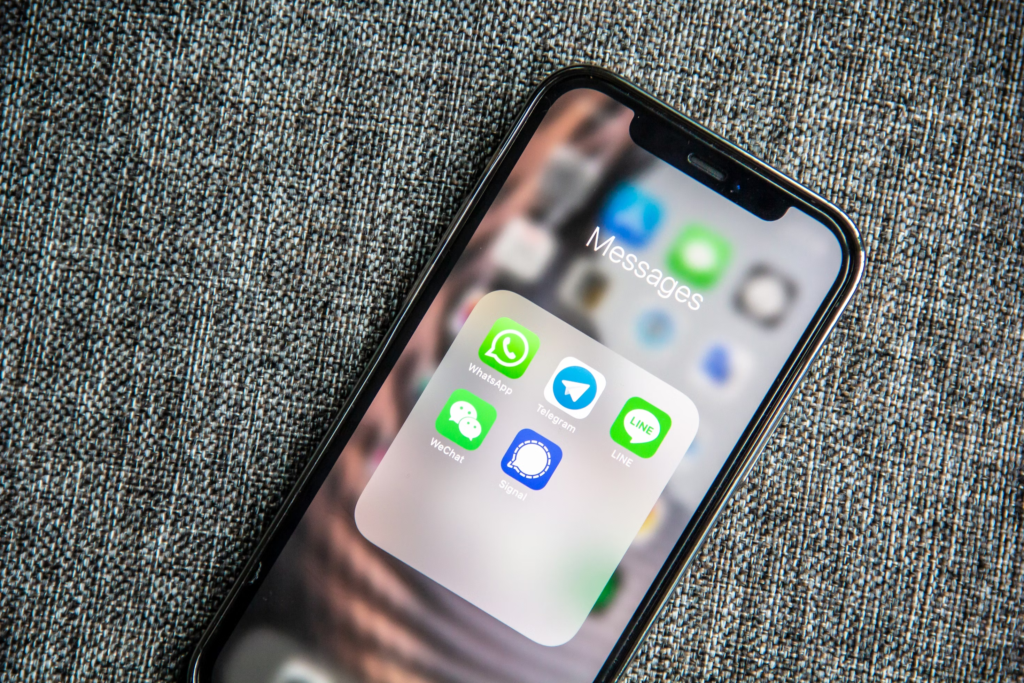
80% of customers check texts within five minutes–but if your SMS marketing campaigns aren’t converting, what’s the point? You crafted the offers, hit ‘send’, and… crickets. Your customers can get 100+ messages in a day. The question is, how can yours stand out?
The answer isn’t luck—it’s strategy.
If you keep your SMS marketing running with no customers to show for it, it won’t be long until you’re operating at a loss. Unopened messages = waste of resources = losing potential customers.
Whether the result of a weak call to action or excessive texts that your customers mistake as spam, your SMS marketing campaign may be falling short of expectations. But with a few tweaks, you can maximize messaging as the marketing tool for your restaurant. From irresistible CTAs to hyper-personalized deals, we’ll cover the best practices for SMS marketing that could help turn scrollers into regulars.
Tips for making effective SMS marketing for your restaurant
If you want to reel in more long-term customers for your restaurant, SMS marketing is proven to be the perfect course of action. The F&B business has the highest order placement rate from text message marketing and the most revenue per customer with $14.
More than email or any other channel, SMS has the highest open rate—98%.
However, there are pitfalls that businesses often ignore–like spammy messaging or poor timing–that can derail even the most well-intentioned campaigns. If you want to evade common slip-ups, you have to use the right tools skillfully.
Let us take you through the best actionable practices and tips to help ensure your texts don’t just land in inboxes… but actually drive results.
1. Personalize Your Messages
Best practice: Take advantage of all customer data at your disposal for tailored messages. You can further enhance the customer experience by localizing your messages and using casual language. For example: “Sudah makan? Tapau whatever you want with 20% off your next order!”
Pro Tip: Use names, purchase history, or location to segment your customers based on previous behavior and preferences. Then, you can send targeted offers to different groups, such as frequent visitors, first-time buyers, or inactive customers, maximizing the texts’ relevance.
2. Keep Your Content Crystal Clear
Best Practice: Your messages should be short and sweet. Remember, no one has time to read blocks of text. The more direct you convey your message, the better. Keeping it under 160 characters is your safest bet.
Pro Tip: Include a compelling CTA and a shortened link so your customers can easily access your menu or place an order. Make sure your SMS provides value—misleading content can harm your reputation and discourage customers from opening future messages.
3. Send Messages at the Right Time
Best Practice: The right message at the right time can make all the difference to your customer. That’s why sending messages during regular business hours, from 10 am to 8 pm, is ideal. Splitting the schedule to account for lunch and dinner times works too. That means sending messages around 10 am to 12 pm and 5 pm to 8 pm. Don’t forget to send special promos on holidays, birthdays, and events!
Pro Tip: Keep an eye on your text frequency. Sending more than four text blasts per month can get exhausting for your customers, especially if there are no seasonal occasions or promotions. Also, be wary of sending texts late at night or early in the morning. Lastly, it’s good to review your data and see at what times your messages get the best response.
4. Offer Incentives
Best Practice: The main reason most people opt-in to SMS messaging is to get insider info on special deals. 59% of customers look for discount offers from a brand’s SMS messages. So hook your customers with offers like discounts, freebies, bundles, or limited-time promos.
Pro Tip: Emphasize exclusivity and high-quality offers. If the incentive isn’t something worth coming back for, you risk customers ignoring your SMS blasts. Pay attention to seasonal offers or discounts that can help you attract customers during off-peak times.
5. Automate Your Messaging
Best Practice: Once you have your draft ready, it can be difficult to align the right sending time with your busy schedule. That’s what automation is for! You can schedule campaigns in advance, ensuring timely delivery—making it easy to reach a wide audience.
Pro Tip: You can still personalize messaging with automation. Through dedicated templates, you can keep that friendly feeling and include names without sacrificing time for manual sending. You can also set up automated campaigns to trigger after specific customer behavior. For example, if a customer has been inactive for a certain amount of time, the campaign can automatically offer a discount through text in order to re-engage the customer.
6. Integrate Your SMS with Other Marketing Channels
Best Practice: Harmonize your SMS campaign with email and social media to create a unified message. This streamlines your customers’ journey from initial awareness of your restaurant to conversion. This means that wherever your customer finds your restaurant – when scrolling social media, checking their email, or getting a text notification – each encounter racks up engagement.
Pro Tip: Try offering exclusive cross-channel offers. This means that your customers can be aware of the offer through SMS, but they will only get that sweet promo if they redeem it digitally through WhatsApp. You can also activate event-triggered messaging, where messages are automated based on customer behavior in other channels, like opening your email promotion or after a digital payment.
How to measure the success of SMS marketing
After implementing the right strategies, how do you know if your plan’s getting the proper results? Well, you could measure SMS marketing success by assessing certain data sets. From there, you can crunch the numbers and better optimize your campaign. The figures that you should look out for are:
1. Conversion rate (CVR)
What it is: Measures how many people took a desired action after receiving your text.
How to assess: [Number of desired actions/Number of messages sent] x 100
2. Click-through rate (CTR)
What it is: Measures how effective your messages are by calculating how many people clicked your message and embedded links.
How to assess: [Number of clicks/Number of messages sent] x 100
3. Customer acquisition cost
What it is: Measures the amount of money spent per customer gained.
How to assess: [Number of SMS campaign expenses/Number of acquired customers]
4. Campaign return on investment (ROI)
What it is: Measures your net profit accumulated from the campaign.
How to assess: [(Total sales – total investment) / total investment] x 100
SMS Marketing By SimpleLoyalty
Unconvinced that SMS marketing is successful and profitable? We can show real numbers to reassure you!
Let’s say you’re running a point multiplier campaign. How do you make your customers know about it? By sending them an SMS blast of course! SMS marketing bridges the gap between your loyalty program and customer awareness.
When used in tandem with other campaigns, SMS marketing can enhance their effectiveness and make a noticeable sales difference. And we at SimpleLoyalty have handled many such cases! Let’s take a look at some of them:
Boosting customer visits on a stay-at-home holiday
Challenge: A Thai restaurant wanted to maximize their sales on Chinese New Year, a holiday well-known for families to eat at home.
Solution: We suggested doing a manual SMS blast, targeting people who have visited their restaurant more than twice.
Result: The campaign ended up generating RM38K in sales, with more than 50% of those who returned having been inactive for more than 2 months. Afterward, the campaign gave the restaurant a better idea of which customer segment they should target in the future.
Using SMS to guarantee crowded customers on off-peak days
Challenge: A hot pot restaurant wanted to drive their sales up on slow Tuesdays.
Solution: We suggested giving double points to customers on that day, promoting it as “Members day.” By using an SMS blast, customers are aware of the promo and are more likely to be higher spenders compared to those not receiving a message.
Result: RM 103,740 sales boost each year, with a 7% customer increase on Tuesdays. On top of RM 103,148 in organic sales, SMS marketing added an extra RM 21,985—a sweet bonus.
Takeaway
If utilized well, SMS marketing can give you an edge over other restaurants by bringing in consistent customers and keeping ROI high.
To recap, the best practices for SMS marketing are:
- Personalize Your Messages
- Keep Your Content Crystal Clear
- Send Messages at the Right Time
- Offer Incentives
- Automate Your Messaging
- Integrate Your SMS with Other Marketing Channels
Once these strategies are in place, you can track results and refine your campaigns as your business evolves.
Start your SMS marketing journey with SimpleLoyalty! Sign up now for FREE.

